Features
The Denial and Whitewashing of History

by Vijaya Chandrasoma
Censorship, the burning and banning of books and the persecution/murder of writers have been despicable crimes perpetrated by the human race through the ages. The first such recorded atrocity was in 213 BCE, during the Qin dynasty, when Emperor Qin Shi Huang ordered the burning of books and the live burial of scholars in order that he may remain on his throne.
The obliteration of the Grand Library of Baghdad by the marauding Mongols in 1258; the destruction of Aztec and Mayan manuscripts during the Spanish colonization of the Americas; the burnings of Catholic manuscripts in England after Henry VIII broke away from the Catholic Church; the use of books seized from the US Library of Congress to burn the US Capitol during the War of 1812; Nazi book burning of communist and Jewish manuscripts “subversive to or representing ideologies opposed to Nazism”; and, closer to home, the complete destruction, in 1981, of the Jaffna Public Library allegedly by government-sponsored Sinhalese mobs, who set fire to one of the biggest libraries in Asia, containing over 97,000 irreplaceable books and manuscripts.
Though the three-decade long ethnic war in Sri Lanka took the lives of tens of thousands of Sri Lankans and caused incalculable destruction to valuable property and resources, history will rank the burning of the Jaffna Library as the greatest atrocity in a conflict replete with atrocities.
These are but a few of the more egregious instances of destruction of books and manuscripts, representing efforts by kings, tyrants, invaders and politicians to destroy historical records, traditions and cultures of civilizations, to seize lands and rule as conquerors. They may have silenced some, they may have destroyed others, but they are all destined to fail. As Heinrich Heine, one of Germany’s greatest poets, wrote, “When they burn books, they will ultimately also burn people”.
The First Amendment of the US Constitution enshrines freedom of speech, and guarantees freedoms concerning religion, expression, assembly and petition. Many American classics have been “challenged” in the USA during the past two centuries, but their suppression has not remained in force because of the guard-rails provided by the First Amendment. Charles Darwin’s On the Origin of Species was challenged and suppressed from 1859 for its theories on evolution, which went against Christian beliefs of Divine Creation. Aldous Huxley’s Brave New World, John Steinbeck’s Of Mice and Men, Harper Lee’s To Kill a Mockingbird and J.D. Salinger’s Catcher in the Rye are all examples of American classics that have survived spurious challenges of censorship.
The Trump-owned Republican party is now showing a trend towards racism and anti-Semitism, using censorship and suppression in an attempt to rewrite the nation’s history of genocide and slavery, and to deny the horrors of the holocaust.
Critical Race Theory (CRT), also known as the 1619 Project, fancy names of what we used to study as plain “History”, has become a target of censorship for Republicans, primarily Governors DeSantis of Florida and Youngkin of Virginia. These Republican Governors lead the anti-CRT movement, but they are not alone. Many Republican states including Idaho, Oklahoma, Texas, Tennessee, Iowa, New Hampshire, South Carolina, Arizona and North Dakota have all passed legislation banning the teaching of CRT in their classrooms. The objective of such censorship is the obsession of the Radical Right to keep the more gory aspects of US history, including genocide and slavery, out of school curricula; in other words, to teach “selective history” as defined by the invaders and oppressors. CRT has become the latest Bogeyman for the country’s racist history and the way it has impacted its racist present.
The opponents for the dissemination of CRT argue that all white people are unfairly feared as “oppressors” or predators; while black people are all classified as “the oppressed” or victims, through the teaching of historical atrocities and discrimination committed against Native Americans and African Americans by the ancestors of the white man. They aver, against all available evidence, that systemic racism does not exist in the nation today, that CRT is largely an expedient strategy by politicians to win the minority vote. Many of them even hallucinate that the USA is an equitable democracy. They are simply unwilling or unable to remove the blind spot obscuring the fact that America is not great for everyone, that the nation has a long way to go before it becomes a democracy for all of its citizens.
Proponents of CRT submit that American children should be taught the complete history of America, warts and all, not just its grand experiment of Democracy which began in 1789. They do not acknowledge that the nation’s violent and racist past, including genocide and slavery, ultimately led to this experiment, which remains a work-in-progress.
CRT explains how systemic racism is currently the defining feature of the nation, coming to terms with the racial anomalies that exist today in police brutality, the judicial and prison systems, voter suppression and the classification of Black neighbourhoods as “ghettos”. The more we try to deny the atrocities and racial discrimination that have tormented the nation to the present day, the more likely that they will continue, unabated, into the future.
Governors DeSantis and Youngkin, who are walking the tightrope of sucking up to Trump while nursing their own presidential ambitions for 2024, have already banned the teaching of CRT in Florida and Virginia. There is little doubt that this legislation and other such attempts to camouflage and whitewash history will ultimately be overturned by even a 6/3 stacked Republican Supreme Court, as such bans are in direct violation of the First Amendment.
A school district in the State of Tennessee recently voted to ban the sale of the 1992 Pulitzer Prize winning graphic novel titled “The Complete Maus”, by graphic cartoonist/writer Art Spiegelman. The reasons given for the ban are that the book contains “graphic use of unnecessary nudity and profanity and depiction of violence and suicide”. The only example of “unnecessary nudity and suicide” in the book is a small panel illustrating the suicide of Spiegelman’s mother in the tub, having slashed her wrists.
I guess the centrefolds appearing in magazines like Playboy, with lewd illustrations of female genitalia photographed at every possible angle in minute detail, are examples of “necessary nudity”.
And unbelievably, the “profanity” objected to in the book includes seven instances of the expletive “damn”!
Spiegelman’s graphic narrative is based on an interview with his father, a holocaust survivor, of his experiences and suffering at Auschwitz Concentration Camp, and the subsequent suicide of his mother in 1968, apparently because she was unable to live with these memories after the war. Spiegelman depicts the various ethnicities in the form of animals: Jews are Mice (vermin or pests, carriers of disease), Nazis Cats (predators who prey on the Jewish mice), Americans are Dogs (who rescue the Jewish mice from the German cats). The book contains numerous graphic illustrations of hangings and other forms of violence and torture inflicted by the Nazis to subjugate and murder Jews in Auschwitz. Spiegelman’s Pulitzer Prize winning book is a graphic narrative of the atrocities of the holocaust.
Just as the banning of Critical Race Theory is a denial of the grim realities of genocide and slavery in the founding of America, the banning of a book illustrating the brutality suffered by Jews during the 1930s in Hitler’s Germany is a denial of the holocaust.
Legislation recently proposed by the New Hampshire Republican legislature also provides a nightmare of things to come if the Republicans gain control of Congress and the presidency. The proposed Bill, entitled “An Act Relative to Teachers’ loyalty”, seeks to ban public schoolteachers from fostering any theory that depicts US history or its founding in a negative light. The Bill states, “Such prohibition includes but is not limited to teaching that the United States was founded on racism”. Which it was, and there is no doubt that genocide and slavery are implicit in this concept of “racism”.
These examples of repression highlight the current racist and anti-Semitic trends shown by Trump and the Republican Party to promote such authoritarian and racist measures of censorship. If these repressive measures are ever accepted nationally, they will prove a great danger to a diverse and just American society in the future. Especially if a defeated, seditious former president or wannabe dictators like DeSantis and Youngkin take control of the presidency and Congress in 2024.
The Radical Right attempts to erase the history of America in the hope that such erasure will whitewash the sins of their white forefathers, and so falsely paint America as a universally equitable democracy. A democracy where, according to the preamble to the US Constitution, “all men are created equal, that they are endowed by their Creator with certain inalienable Rights, that among these are Life, Liberty and the pursuit of Happiness”. Unfortunately, the new Republican Party intends, as the original Framers also intended, to restrict these “inalienable rights” only to white, Christian men.
The nation will overcome, in the fullness of time, the challenges of racism and authoritarianism posed by Trump and his Republican, white supremacist base. Martin Luther King’s dream, that outlines the long history of racial injustice in America, with the hope that his children will one day be “judged not by the colour of their skin but by the content of their character” has only been delayed by the death throes of white supremacy.
Just as Hitler’s dream of the birth of an ethnically pure, blonde and blue-eyed Aryan Nation never saw the light of day, so the concept of a Trump-backed Republican Party’s dream of a nation dominated by white supremacists will also be destroyed by the very history it seeks to suppress.
Features
Trade preferences to support post-Ditwah reconstruction
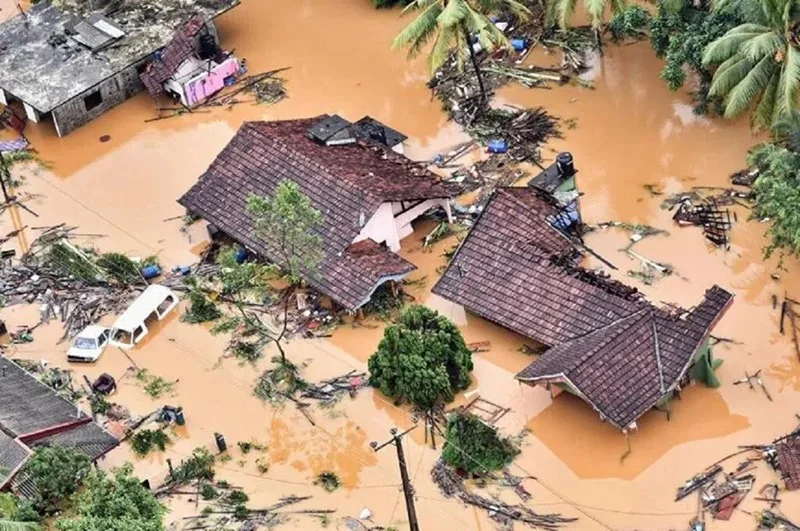
The manner in which the government succeeded in mobilising support from the international community, immediately after the devastating impact of Cyclone Ditwah, may have surprised many people of this country, particularly because our Opposition politicians were ridiculing our “inexperienced” government, in the recent past, for its inability to deal with the international community effectively. However, by now it is evident that the government, with the assistance of the international community and local nongovernmental actors, like major media organisations, has successfully managed the recovery efforts. So, let me begin by thanking them for what they have done so far.
Yet, some may argue that it is not difficult to mobilise the support for recovery efforts from the international community, immediately after any major disaster, and the real challenge is to sustain that support through the next few weeks, months and years. Because the recovery process, more specifically the post-recovery reconstruction process, requires long-term support. So, the government agencies should start immediately to focus on, in addition to initial disaster relief, a longer-term strategy for reconstruction. This is important because in a few weeks’ time, the focus of the global community may shift elsewhere … to another crisis in another corner of the world. Before that happens, the government should take initiatives to get the support from development partners on appropriate policy measures, including exceptional trade preferences, to help Sri Lanka in the recovery efforts through the medium and the long term.
Use of Trade Preferences to support recovery and reconstruction
In the past, the United States and the European Union used exceptional enhanced trade preferences as part of the assistance packages when countries were devastated by natural disasters, similar to Cyclone Ditwah. For example:
- After the devastating floods in Pakistan, in July 2010, the EU granted temporary, exceptional trade preferences to Pakistan (autonomous trade preferences) to aid economic recovery. This measure was a de facto waiver on the standard EU GSP (Generalised Scheme of Preferences) rules. The preferences, which were proposed in October 2010 and were applied until the end of 2013, effectively suspended import duties on 75 types of goods, including textiles and apparel items. The available studies on this waiver indicate that though a significant export hike occurred within a few months after the waiver became effective it did not significantly depress exports by competing countries. Subsequently, Pakistan was granted GSP+ status in 2014.
- Similarly, after the 2015 earthquakes in Nepal, the United States supported Nepal through an extension of unilateral additional preferences, the Nepal Trade Preferences Programme (NTPP). This was a 10-year initiative to grant duty-free access for up to 77 specific Nepali products to aid economic recovery after the 2015 earthquakes. This was also a de facto waiver on the standard US GSP rules.
- Earlier, after Hurricanes Mitch and Georges caused massive devastation across the Caribbean Basin nations, in 1998, severely impacting their economies, the United States proposed a long-term strategy for rebuilding the region that focused on trade enhancement. This resulted in the establishment of the US Caribbean Basin Trade Partnership Act (CBTPA), which was signed into law on 05 October, 2000, as Title II of the Trade and Development Act of 2000. This was a more comprehensive facility than those which were granted to Pakistan and Nepal.

What type of concession should Sri Lanka request from our development partners?
Given these precedents, it is appropriate for Sri Lanka to seek specific trade concessions from the European Union and the United States.
In the European Union, Sri Lanka already benefits from the GSP+ scheme. Under this arrangement Sri Lanka’s exports (theoretically) receive duty-free access into the EU markets. However, in 2023, Sri Lanka’s preference utilisation rate, that is, the ratio of preferential imports to GSP+ eligible imports, stood at 59%. This was significantly below the average utilisation of other GSP beneficiary countries. For example, in 2023, preference utilisation rates for Bangladesh and Pakistan were 90% and 88%, respectively. The main reason for the low utilisation rate of GSP by Sri Lanka is the very strict Rules of Origin requirements for the apparel exports from Sri Lanka. For example, to get GSP benefits, a woven garment from Sri Lanka must be made from fabric that itself had undergone a transformation from yarn to fabric in Sri Lanka or in another qualifying country. However, a similar garment from Bangladesh only requires a single-stage processing (that is, fabric to garment) qualifies for GSP. As a result, less than half of Sri Lanka’s apparel exports to the EU were ineligible for the preferences in 2023.
Sri Lanka should request a relaxation of this strict rule of origin to help economic recovery. As such a concession only covers GSP Rules of Origin only it would impact multilateral trade rules and would not require WTO approval. Hence could be granted immediately by the EU.
United States
Sri Lanka should submit a request to the United States for (a) temporary suspension of the recently introduced 20% additional ad valorem duty and (b) for a programme similar to the Nepal Trade Preferences Programme (NTPP), but designed specifically for Sri Lanka’s needs. As NTPP didn’t require WTO approval, similar concessions also can be granted without difficulty.
Similarly, country-specific requests should be carefully designed and submitted to Japan and other major trading partners.
(The writer is a retired public servant and can be reached at senadhiragomi@gmail.com)
by Gomi Senadhira
Features
Lasting power and beauty of words
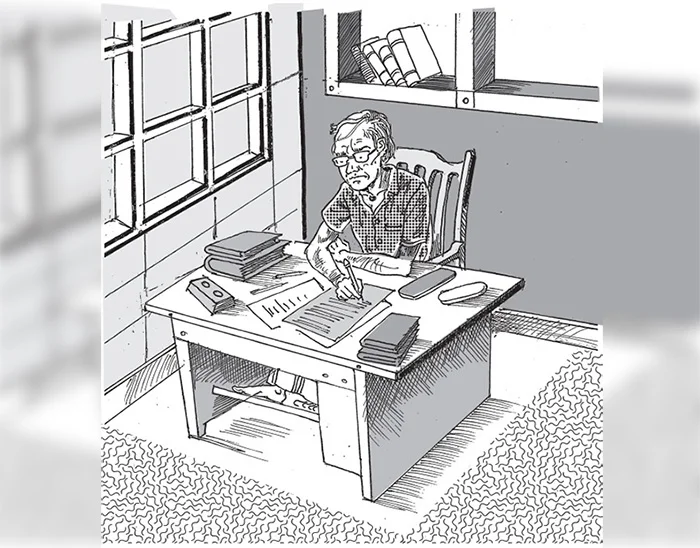
Novelists, poets, short story writers, lyricists, politicians and columnists use words for different purposes. While some of them use words to inform and elevate us, others use them to bolster their ego. If there was no such thing called words, we cannot even imagine what will happen to us. Whether you like it or not everything rests on words. If the Penal Code does not define a crime and prescribe a punishment, judges will not be able to convict criminals. Even the Constitution of our country is a printed document.
A mother’s lullaby contains snatches of sweet and healing words. The effect is immediate. The baby falls asleep within seconds. A lover’s soft and alluring words go right into his or her beloved. An army commander’s words encourage soldiers to go forward without fear. The British wartime Prime Minister Winston Churchill’s words still ring in our ears: “… we shall defend our Island, whatever the cost may be, we shall fight on the beaches, we shall fight on the landing grounds, we shall fight in the fields and in the streets, we shall fight in the hills; we shall never surrender …”
Writers wax eloquent on love. English novelist John Galsworthy wrote: “Love is no hot-house flower, but a wild plant, born of a wet night, born of an hour of sunshine; sprung from wild seed, blown along the road by a wild wind. A wild plant that, when it blooms by chance within the hedge of our gardens, we call a flower; and when it blooms outside we call a weed; but flower or weed, whose scent and colour are always wild.” While living in a world dominated by technology, we often hear a bunch of words that is colourless and often cut to verbal ribbons – “How R U” or “Luv U.” Such words seem to squeeze the life out of language.
Changing medium
Language is a constantly changing medium. New words and forms arrive and old ones die out. Whoever thought that the following Sinhala words would find a place in the Oxford English Dictionary? “Asweddumize, Avurudu, Baila, Kiribath, Kottu Roti, Mallung, Osari, Papare, Walawwa and Watalappan.” With all such borrowed words the English language is expanding and remains beautiful. The language helps us to express subtle ideas clearly and convincingly.
You are judged by the words you use. If you constantly use meaningless little phrases, you will be considered a worthless person. When you read a well-written piece of writing you will note how words jump and laugh on the paper or screen. Some of them wag their tails while others stand back like shy village belles. However, they serve a useful purpose. Words help us to write essays, poems, short stories and novels. If not for the beauty of the language, nobody will read what you write.
If you look at the words meaningfully, you will see some of them tap dancing while others stand to rigid attention. Big or small, all the words you pen form part of the action or part of the narrative. The words you write make your writing readable and exciting. That is why we read our favourite authors again and again.
Editorials
If a marriage is to succeed, partners should respect and love each other. Similarly, if you love words, they will help you to use them intelligently and forcefully. A recent survey in the United States has revealed that only eight per cent of people read the editorial. This is because most editorials are not readable. However, there are some editorials which compel us to read them. Some readers collect such editorials to be read later.
Only a lover of words would notice how some words run smoothly without making a noise. Other words appear to be dancing on the floor. Some words of certain writers are soothing while others set your blood pounding. There is a young monk who is preaching using simple words very effectively. He has a large following of young people addicted to drugs. After listening to his preaching, most of them have given up using illegal drugs. The message is loud and clear. If there is no demand for drugs, nobody will smuggle them into the country.
Some politicians use words so rounded at the edges and softened by wear that they are no longer interesting. The sounds they make are meaningless and listeners get more and more confused. Their expressions are full of expletives the meaning of which is often soiled with careless use of words.
Weather-making
Some words, whether written or spoken, stick like superglue. You will never forget them. William Vergara in his short essay on weather-making says, “Cloud-seeding has touched off one of the most baffling controversies in meteorological history. It has been blamed for or credited with practically all kinds of weather. Some scientists claim seeding can produce floods and hail. Others insist it creates droughts and dissipates clouds. Still others staunchly maintain it has no effect at all. The battle is far from over, but at last one clear conclusion is beginning to emerge: man can change the weather, and he is getting better at it.”
There are words that nurse the ego and heal the heart. The following short paragraph is a good example. S. Radhakrishnan says, “In every religion today we have small minorities who see beyond the horizon of their particular faith, not through religious fellowship is possible, not through the imposition of any one way on the whole but through an all-inclusive recognition that we are all searchers for the truth, pilgrims on the road, that we all aim at the same ethical and spiritual standard.”
There are some words joined together in common phrases. They are so beautiful that they elevate the human race. In the phrase ‘beyond a shadow of doubt’, ‘a shadow’ connotes a dark area covering light. ‘A doubt’ refers to hesitancy in belief. We use such phrases blithely because they are exquisitely beautiful in their structure. The English language is a repository of such miracles of expression that lead to deeper understanding or emphasis.
Social media
Social media use words powerfully. Sometimes they invent new words. Through the social media you can reach millions of viewers without the intervention of the government. Their opinion can stop wars and destroy tyrants. If you use the right words, you can even eliminate poverty to a great extent.
The choice of using powerful words is yours. However, before opening your mouth, tap the computer, unclip a pen, write a lyric or poem, think twice of the effect of your writing. When you talk with a purpose or write with pleasure, you enrich listeners and readers with your marvellous language skills. If you have a command of the language, you will put across your point of view that counts. Always try to find the right words and change the world for a better place for us to live.
By R. S. Karunaratne
karunaratners@gmail.com
Features
Why Sri Lanka Still Has No Doppler Radar – and Who Should Be Held Accountable

Eighteen Years of Delay:
Cyclone Ditwah has come and gone, leaving a trail of extensive damage to the country’s infrastructure, including buildings, roads, bridges, and 70% of the railway network. Thousands of hectares of farming land have been destroyed. Last but not least, nearly 1,000 people have lost their lives, and more than two million people have been displaced. The visuals uploaded to social media platforms graphically convey the widespread destruction Cyclone Ditwah has caused in our country.
The purpose of my article is to highlight, for the benefit of readers and the general public, how a project to establish a Doppler Weather Radar system, conceived in 2007, remains incomplete after 18 years. Despite multiple governments, shifting national priorities, and repeated natural disasters, the project remains incomplete.
Over the years, the National Audit Office, the Committee on Public Accounts (COPA), and several print and electronic media outlets have highlighted this failure. The last was an excellent five-minute broadcast by Maharaja Television Network on their News First broadcast in October 2024 under a series “What Happened to Sri Lanka”
The Agreement Between the Government of Sri Lanka and the World Meteorological Organisation in 2007.
The first formal attempt to establish a Doppler Radar system dates back to a Trust Fund agreement signed on 24 May 2007 between the Government of Sri Lanka (GoSL) and the World Meteorological Organisation (WMO). This agreement intended to modernize Sri Lanka’s meteorological infrastructure and bring the country on par with global early-warning standards.
The World Meteorological Organisation (WMO) is a specialized agency of the United Nations established on March 23, 1950. There are 193 member countries of the WMO, including Sri Lanka. Its primary role is to promote the establishment of a worldwide meteorological observation system and to serve as the authoritative voice on the state and behaviour of the Earth’s atmosphere, its interaction with the oceans, and the resulting climate and water resources.
According to the 2018 Performance Audit Report compiled by the National Audit Office, the GoSL entered into a trust fund agreement with the WMO to install a Doppler Radar System. The report states that USD 2,884,274 was deposited into the WMO bank account in Geneva, from which the Department of Metrology received USD 95,108 and an additional USD 113,046 in deposit interest. There is no mention as to who actually provided the funds. Based on available information, WMO does not fund projects of this magnitude.
The WMO was responsible for procuring the radar equipment, which it awarded on 18th June 2009 to an American company for USD 1,681,017. According to the audit report, a copy of the purchase contract was not available.
Monitoring the agreement’s implementation was assigned to the Ministry of Disaster Management, a signatory to the trust fund agreement. The audit report details the members of the steering committee appointed by designation to oversee the project. It consisted of personnel from the Ministry of Disaster Management, the Departments of Metrology, National Budget, External Resources and the Disaster Management Centre.
The Audit Report highlights failures in the core responsibilities that can be summarized as follows:
· Procurement irregularities—including flawed tender processes and inadequate technical evaluations.
· Poor site selection
—proposed radar sites did not meet elevation or clearance requirements.
· Civil works delays
—towers were incomplete or structurally unsuitable.
· Equipment left unused
—in some cases for years, exposing sensitive components to deterioration.
· Lack of inter-agency coordination
—between the Meteorology Department, Disaster Management Centre, and line ministries.
Some of the mistakes highlighted are incomprehensible. There is a mention that no soil test was carried out before the commencement of the construction of the tower. This led to construction halting after poor soil conditions were identified, requiring a shift of 10 to 15 meters from the original site. This resulted in further delays and cost overruns.
The equipment supplier had identified that construction work undertaken by a local contractor was not of acceptable quality for housing sensitive electronic equipment. No action had been taken to rectify these deficiencies. The audit report states, “It was observed that the delay in constructing the tower and the lack of proper quality were one of the main reasons for the failure of the project”.
In October 2012, when the supplier commenced installation, the work was soon abandoned after the vehicle carrying the heavy crane required to lift the radar equipment crashed down the mountain. The next attempt was made in October 2013, one year later. Although the equipment was installed, the system could not be operationalised because electronic connectivity was not provided (as stated in the audit report).
In 2015, following a UNOPS (United Nations Office for Project Services) inspection, it was determined that the equipment needed to be returned to the supplier because some sensitive electronic devices had been damaged due to long-term disuse, and a further 1.5 years had elapsed by 2017, when the equipment was finally returned to the supplier. In March 2018, the estimated repair cost was USD 1,095,935, which was deemed excessive, and the project was abandoned.
COPA proceedings
The Committee on Public Accounts (COPA) discussed the radar project on August 10, 2023, and several press reports state that the GOSL incurred a loss of Rs. 78 million due to the project’s failure. This, I believe, is the cost of constructing the Tower. It is mentioned that Rs. 402 million had been spent on the radar system, of which Rs. 323 million was drawn from the trust fund established with WMO. It was also highlighted that approximately Rs. 8 million worth of equipment had been stolen and that the Police and the Bribery and Corruption Commission were investigating the matter.
JICA support and project stagnation
Despite the project’s failure with WMO, the Japan International Cooperation Agency (JICA) entered into an agreement with GOSL on June 30, 2017 to install two Doppler Radar Systems in Puttalam and Pottuvil. JICA has pledged 2.5 billion Japanese yen (LKR 3.4 billion at the time) as a grant. It was envisaged that the project would be completed in 2021.
Once again, the perennial delays that afflict the GOSL and bureaucracy have resulted in the groundbreaking ceremony being held only in December 2024. The delay is attributed to the COVID-19 pandemic and Sri Lanka’s economic crisis.
The seven-year delay between the signing of the agreement and project commencement has led to significant cost increases, forcing JICA to limit the project to installing only one Doppler Radar system in Puttalam.
Impact of the missing radar during Ditwah
As I am not a meteorologist and do not wish to make a judgment on this, I have decided to include the statement issued by JICA after the groundbreaking ceremony on December 24, 2024.
“In partnership with the Department of Meteorology (DoM), JICA is spearheading the establishment of the Doppler Weather Radar Network in the Puttalam district, which can realize accurate weather observation and weather prediction based on the collected data by the radar. This initiative is a significant step in strengthening Sri Lanka’s improving its climate resilience including not only reducing risks of floods, landslides, and drought but also agriculture and fishery“.
Based on online research, a Doppler Weather Radar system is designed to observe weather systems in real time. While the technical details are complex, the system essentially provides localized, uptotheminute information on rainfall patterns, storm movements, and approaching severe weather. Countries worldwide rely on such systems to issue timely alerts for monsoons, tropical depressions, and cyclones. It is reported that India has invested in 30 Doppler radar systems, which have helped minimize the loss of life.
Without radar, Sri Lanka must rely primarily on satellite imagery and foreign meteorological centres, which cannot capture the finescale, rapidly changing weather patterns that often cause localized disasters here.
The general consensus is that, while no single system can prevent natural disasters, an operational Doppler Radar almost certainly would have strengthened Sri Lanka’s preparedness and reduced the extent of damage and loss.
Conclusion
Sri Lanka’s inability to commission a Doppler Radar system, despite nearly two decades of attempts, represents one of the most significant governance failures in the country’s disastermanagement history.
Audit findings, parliamentary oversight proceedings, and donor records all confirm the same troubling truth: Sri Lanka has spent public money, signed international agreements, received foreign assistance, and still has no operational radar. This raises a critical question: should those responsible for this prolonged failure be held legally accountable?
Now may not be the time to determine the extent to which the current government and bureaucrats failed the people. I believe an independent commission comprising foreign experts in disaster management from India and Japan should be appointed, maybe in six months, to identify failures in managing Cyclone Ditwah.
However, those who governed the country from 2007 to 2024 should be held accountable for their failures, and legal action should be pursued against the politicians and bureaucrats responsible for disaster management for their failure to implement the 2007 project with the WMO successfully.
Sri Lanka cannot afford another 18 years of delay. The time for action, transparency, and responsibility has arrived.
(The views and opinions expressed in this article are solely those of the author and do not necessarily reflect the policy or position of any organization or institution with which the author is affiliated).
By Sanjeewa Jayaweera
-
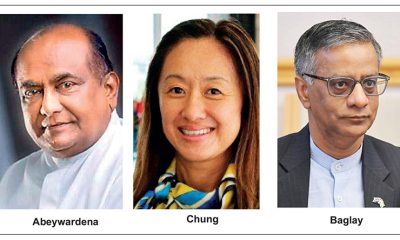
 Features6 days ago
Features6 days agoFinally, Mahinda Yapa sets the record straight
-
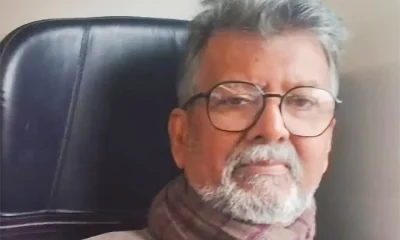
 News7 days ago
News7 days agoCyclone Ditwah leaves Sri Lanka’s biodiversity in ruins: Top scientist warns of unseen ecological disaster
-
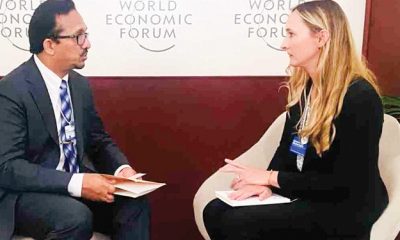
 Features6 days ago
Features6 days agoHandunnetti and Colonial Shackles of English in Sri Lanka
-

 Business4 days ago
Business4 days agoCabinet approves establishment of two 50 MW wind power stations in Mullikulum, Mannar region
-

 News5 days ago
News5 days agoGota ordered to give court evidence of life threats
-

 Features7 days ago
Features7 days agoAn awakening: Revisiting education policy after Cyclone Ditwah
-

 Features5 days ago
Features5 days agoCliff and Hank recreate golden era of ‘The Young Ones’
-

 Opinion6 days ago
Opinion6 days agoA national post-cyclone reflection period?













